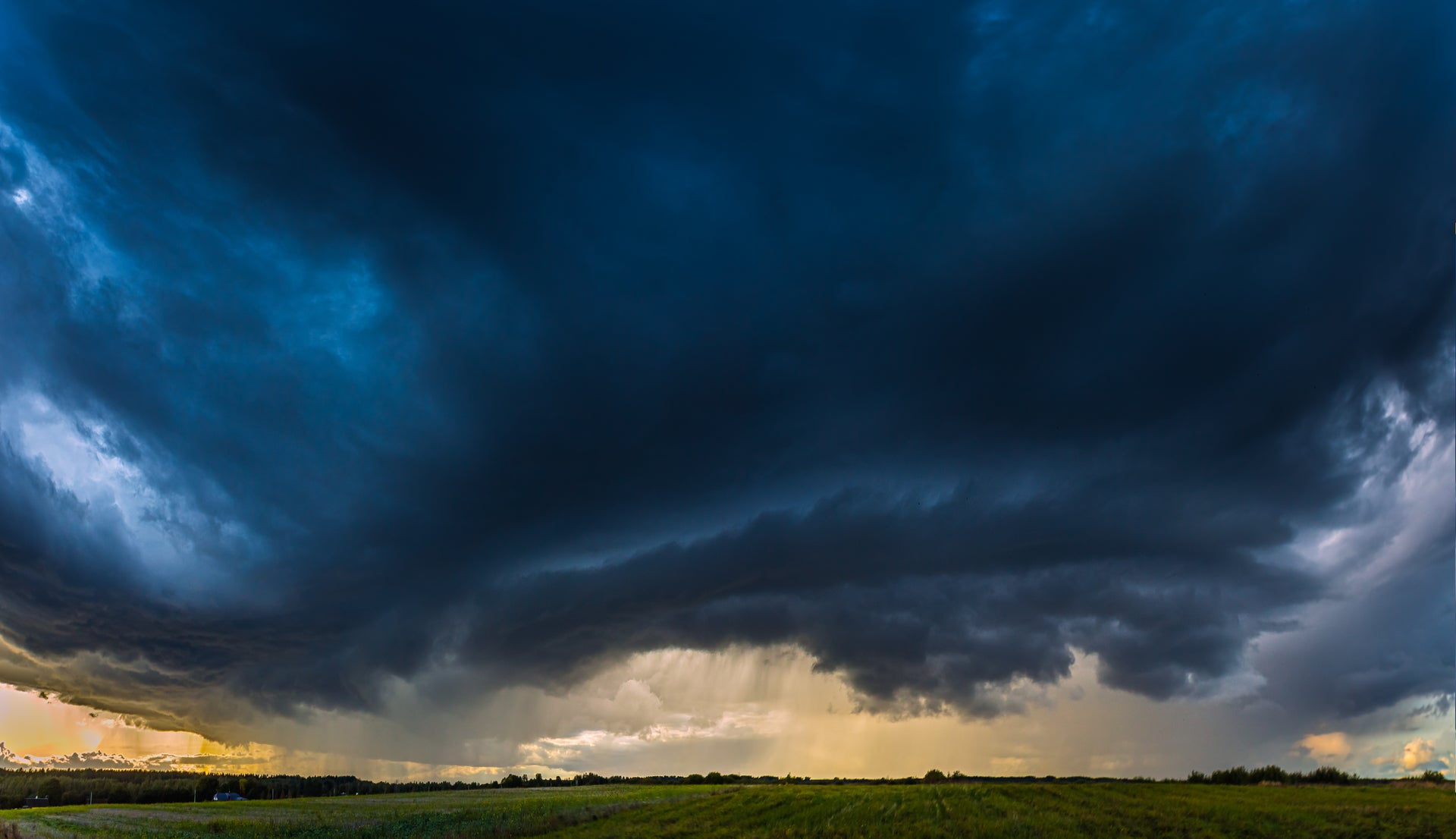Overview:
As federal disaster relief aid is delayed or denied, insurance fraud is poised to rise, threatening already fragile coverage systems across the country.
- Recently, there have been delays in federal disaster relief, leaving states and insurers to consider how to reshape recovery efforts.
- As funds tighten and storms worsen, there are indications that insurance fraud rates will be above average in the coming years.
- Insurance bills might soar — even for those not in a disaster zone.

Federal disaster funds have long helped American communities recover from natural disasters. But in 2025, these funds are no longer a given.
Although deadly and destructive tornadoes tore through Arkansas in March, the state’s request for federal disaster assistance was not approved until May 23 after the state appealed FEMA’s initial denial.
In April, the Federal Emergency Management Agency denied Washington state’s request for recovery funding from last November’s “bomb cyclone” windstorms. Then in May, FEMA rejected North Carolina’s request for extended financial support for Hurricane Helene victims.
Uncertainty around disaster funding policy leaves these areas — as well as FEMA — in limbo. Without federal backing, disaster recovery would fall to state taxpayers and homeowners, who will turn to state agencies and private insurers for aid. With more demand on them, states and private insurers will have to limit or raise the cost of coverage — a chain reaction that has already had consequences in California and Florida.
With fewer places to turn in the aftermath of natural disasters, Cotality expects fraudulent property insurance claims to hover above the average over the next five years.
The stretch to make ends meet
Already, one in every 10 property and casualty (P&C) claims involve some form of inaccurate or misleading information. Adding an influx of claims containing exaggerated damages as well as disputes will not just burden the insurance industry. Property insurance fraud costs American policyholders over $45 billion annually in the form of inflated premiums, higher deductibles, and narrower coverage.
The consequences of this additional strain on the U.S. insurance system are already apparent. The average cost of homeowners’ insurance in the U.S. has jumped 74% over the last 15 years, which has helped push up homeowners’ monthly escrow payments by double-digits, Cotality found.
Elevated monthly payments last for the life of a loan; for many homeowners this can mean years of stretching budgets to stay put. But an unexpected storm can upend even the best laid plans.
Cotality identified more than 33.1 million residential properties across the U.S. at moderate or greater risk of sustaining damage from hurricane-force winds. The total bill if all these homes were to sustain full damage would be $11.7 trillion.
However, even homes that don’t sustain damage can still receive reimbursement. There is also the risk of multiple claims. Depending on the type of insurance someone has, homeowners can be pushed into inflating personal property damage claims and seek payment. When this happens, “there’s not a lot an insurance company can do to defend itself,” explained Robert Feldman, WOWs Insurance Services co-founder and CEO. Part of the difficulty lies in the burden of providing definitive proof — a high bar to achieve without the proper tools.
If access to federal disaster aid lessens, insurers will have one less stakeholder to spread risk to, which could lead to delays in claims processing and limit coverage. It could also push private insurers to restructure policies and cap maximum coverage amounts, leaving homeowners in situations where there is more damage than can be claimed.

Even where coverage remains uncapped, increased risk will continue to push premiums higher, creating a vicious cycle. More expensive protection means less access, leaving more people exposed to the elements — a combination that can lead to fraudulent or exaggerated claims.
“A portion of FEMA’s Disaster Recovery Fund funds go to individual relief, and these payments may be reduced in the future,” explained Larsen. “In tandem with the expectation for reductions in scientific funding for weather monitoring, the combination of more need for funds and a perception of lower risk of being caught may lead to chaos — fertile ground for fraud.”
In the upheaval that follows a major natural disaster, insurers without the technology and workflows to validate the severity of a weather event and accurately determine the validity of a claim could find themselves faced with claims from bad actors.
As the U.S. weathers the 2025 hurricane season, understanding risk to accurately underwrite coverage will be important not just for private insurers but also for state-level public plans.
The administrative wrench in state disaster plans
Hurricane season began on June 1, and forecasts indicate that the season will likely be above average. FEMA has not updated its response plan this year —instead, it is relying on 2024 guidance, despite recent cuts. Since January, the agency has lost around 10% of its workforce. A key program that sends staff door-to-door remains in the plan, even though it has been scaled back. Multiple reports have questioned whether this approach can support disaster aid efforts this season.
A FEMA representative told the Wall Street Journal that “FEMA is laser focused on disaster response, and protecting the American people.”
But it’s individual states that may largely support adequate hurricane response. Earlier this year, FEMA proposed raising the damage threshold for a presidentially declared disaster, which could further reduce access to federal aid. An agency spokesperson told Reuters, “FEMA is shifting from bloated, DC-centric dead weight to a lean, deployable disaster force that empowers state actors to provide relief for their citizens.”
The proposed budget for the 2026 fiscal year adds another layer of complication. It cuts FEMA grants by $646 million, including emergency preparedness initiatives and programs that provide emergency shelter and services.
There are also no guarantees about the future of the National Flood Insurance Program (NFIP) that provides about 3.6 million flood insurance policies to property owners across the country. The program, which is most heavily relied upon by hurricane-prone Florida, Texas, and Louisiana, is only secure through September 2025.
This money is essential to states along the U.S. Gulf Coast and the Eastern Seaboard. Cotality found that there are 6.4 million homes with at least a moderate risk of storm surge damage from hurricanes. If and when disaster strikes, the region could face $2.2 trillion in possible reconstruction costs.
If Congress approves a smaller budget, states could find themselves responsible for billions of dollars of disaster aid. Even funding a fraction of the total potential loss could strain state budgets. For private insurers, the entities people turn to when states can’t step up, paying out an increased number of claims may even take a back seat to simply remaining solvent in a more demanding environment.
“Cotality estimates uninsured property losses from 2024’s Hurricanes Helene and Milton at between $24 billion and $36 billion, comparable to insured losses of between $27 billion and $45 billion,” said Pete Carroll, EVP of Public Policy and Industry Relations at Cotality. “If federal disaster declarations are delayed or denied for similarly severe events in 2025, state budgets and private insurers could be overwhelmed — especially if it discourages Congress from approving supplemental disaster funding.”
State government officials are already concerned about their ability to recover from destructive natural events without federal assistance.
“Washington communities have been waiting for months for the resources they need to fully recover from last winter’s devastating storms, and this decision will cause further delay,” Washington Governor Bob Ferguson told The Washington State Standard after FEMA denied the state’s application for aid in April.
Fraud will drive an even wider insurance gap
Mounting economic pressures, shrinking access to affordable coverage, and more destructive natural disasters will only accelerate fraudulent behavior, particularly for states along the Gulf Coast and southeastern seaboard.
Extreme natural catastrophes are raising the risk profiles of these coastal states, according to Cotality data. As exposure worsens, premiums are projected to increase for those with the highest risk. Those rising monthly costs will stress budgets and could put pressure on homeowners’ ability to stay in their homes long term.
Peril risk's influence on rebuild costs in 15 large U.S. cities
Data source: Cotality
"The difference between insured and uninsured loss, also known as the protection gap, is a dark storm on the horizon,” said Tom Larsen, Assistant Vice President of Product Marketing at Cotality. And that gap is positioned to widen as many homeowners voluntarily scale back or eliminate their insurance coverage.
Currently, there is a safety net for these homeowners in the event of a catastrophe; at the very least homes in the risk-prone 100-year floodplain are required to have insurance as a measure of protection. However, considering the possibilities that FEMA may no longer be the backstop it once was, and the possibility of the NFIP lapsing in September, private insurers would be left to bridge an enormous gap.
If this happens, it won’t mean that disaster assistance is any less critical. It just may make it more difficult to foot the bill for access.
As states brace for the 2025 hurricane season, carriers and homeowners need to focus on fraud reduction strategies that keep insurance costs manageable and help stabilize the system from the inside out.








